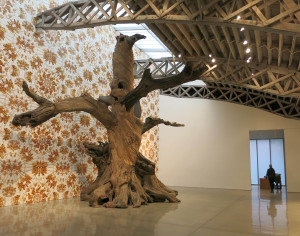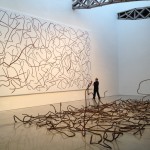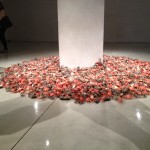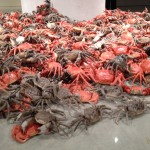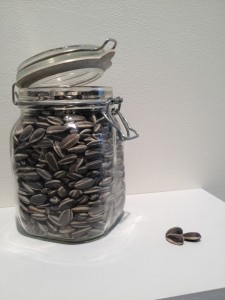A wallpaper of surveillance cameras and the Twitter logo by artist/activist Ai Weiwei at Mary Boone Gallery’s Chelsea space refer to the consequences of his on-line criticism of the Chinese government. On a similar theme, a tree cobbled together from several once-majestic plants suggests disaster and endurance. (On view through Dec 23rd).
